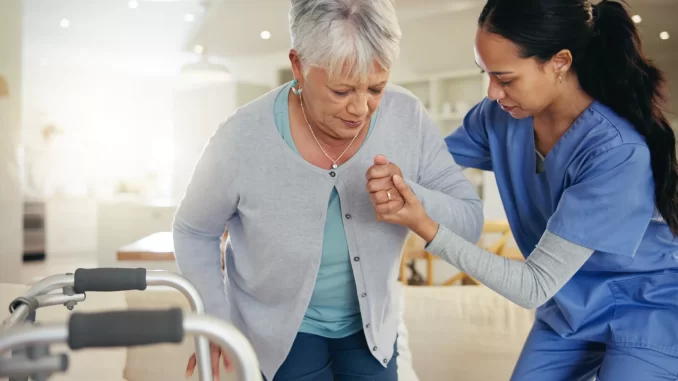
By Hank Russell
A recent study has shown that more than 4 million New Yorkers act as family caregivers — many of which unpaid — as they look after their friends or loved ones who may need assistance with certain activities of daily living (ADL). The survey also looks into the emotional, financial and physical stress these caregivers face.
According to the Caregiving in the US 2025 survey, which was put out by the American Association of Retired Persons (AARP) and the National Alliance for Caregiving, 4.039 million adults in New York State (or 26% of the population) provide care to a family member or friend with complex medical conditions. Every year, caregivers in the Empire State provide $39 billion in unpaid care.
Ninety-seven percent of caregivers look after another adult, half of whom are taking care of a parent, based on the data. Thirteen percent are caring for a child with complex medical conditions or disabilities. The study also found that 28% of caregivers are in the “sandwich generation” — that is, caring for an older adult and a child under 18 at the same time — and 35% live with the person they are providing care for.
Fifty-nine percent of caregivers assist with at least one ADL, according to the study. Among them are getting them in or out of bed or chairs (40%), getting dressed (31%), bathing or showering (28%), getting to or from the toilet (26%), feeding (22%), and dealing with incontinence or diapers (19%).
Data from the study showed that 98% of all family caregivers help with at least one instrumental ADL. That includes shopping (80%), providing transportation (78%), doing housework (67%), preparing meals (61%), managing their finances (60%), giving medications (49%), medical and nursing tasks (45%) and arranging outside services (38%).
The study also found that many caregivers are struggling with finances. According to AARP and the National Alliance for Caregiving, 64% of caregivers work as well as taking care of their loved ones or friends; 23% live in households with an income below $50,000 a year. But, in their responsibilities, caregivers stopped saving (21%), took on more debt (19%), used up short-term personal savings (15%), left bills unpaid or paid them late (14%), could not afford basic expenses (12%) and had to borrow money from family and friends (9%).
Caregivers had to pay $7,200 out of their pockets each year, based on the study. That accounted for 25% of their income.
Despite the daily tasks they must perform for their friends and loved ones, only a minority of caregivers were concerned about their physical and mental health. The survey found that 22% of them experienced seven or more days a month of poor physical health and 15% experienced a large or very large amount of stress and strain.
Twenty-nine percent of caregivers said they experienced seven or more days of poor mental health in a month and 31% found caregiving to be somewhat or very stressful. Further, 12% have difficulty taking care of their own health and 18% said they experienced while caregiving.
“When a loved one needs help, family members, friends, and neighbors step up, that’s what we do,” said AARP New York State Director Beth Finkel. “But too often, caregivers carry this responsibility alone, often putting their finances, health and jobs at risk. As our state population ages, the demand for care will only grow.”

